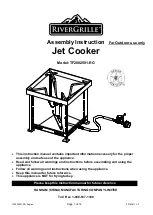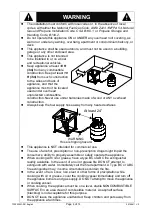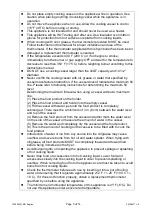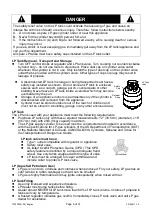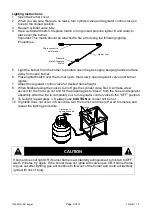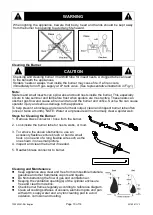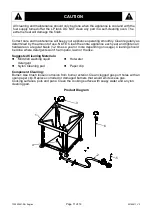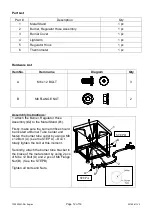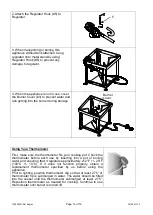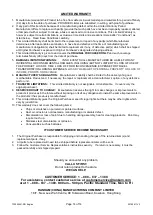
TF2002501-RG English
Page 10 of 14
20190611 V.2
WARNING
When lighting the appliance, beware that body, head and hands should be kept away
from the burner top opening to avoid any fire hazard.
Cleaning the Burner
CAUTION
Checking and cleaning burner / manifold tube for insect nests. A clogged tube can lead
to fire beneath the appliances.
Spiders’ nests or wasps’ mud inside the burner may cause fire. If a fire occurs,
immediately turn off gas supply at LP tank valve. (See representative illustration in Fig.1)
Note:
Spiders and small insects can spin webs and build nests inside the burner. This especially
occurs in late summer and fall before frost when spiders are most active. These nests can
obstruct gas flow and cause a fire in and around the burner and orifice. Such a fire can cause
operator injury and serious damage to the appliance.
To help prevent a blockage and ensure full heat output, clean and inspect burner tube often
(once or twice a month). NOTE: Water or air pressure will not normally clear a spider web.
Steps for Cleaning the Burner:
1. Remove brass connector / hose from the burner.
2. Look inside the burner tube for nests, webs, or mud.
3. To remove the above obstructions, use an
accessory flexible venture brush or bend a small
hook on one end of a long flexible wire such as the
one shown in one small picture.
4. Inspect and clean the burner if needed.
5. Reattach brass connector to burner.
Cleaning and Maintenance
Keep appliance area clear and free from combustible materials,
gasoline and other flammable vapors and liquids.
Do Not obstructing the flow of gas and ventilation air.
Keeping the ventilation opening(s) of the cylinder enclosure
free and clear from debris.
Check burner flames regularly according to reference diagram.
Clean all cooking surfaces of vessels, aluminum pots and pan
with warm, soapy water and a nylon cleaning pad to avoid
oxidation, corrosion and rusting.

